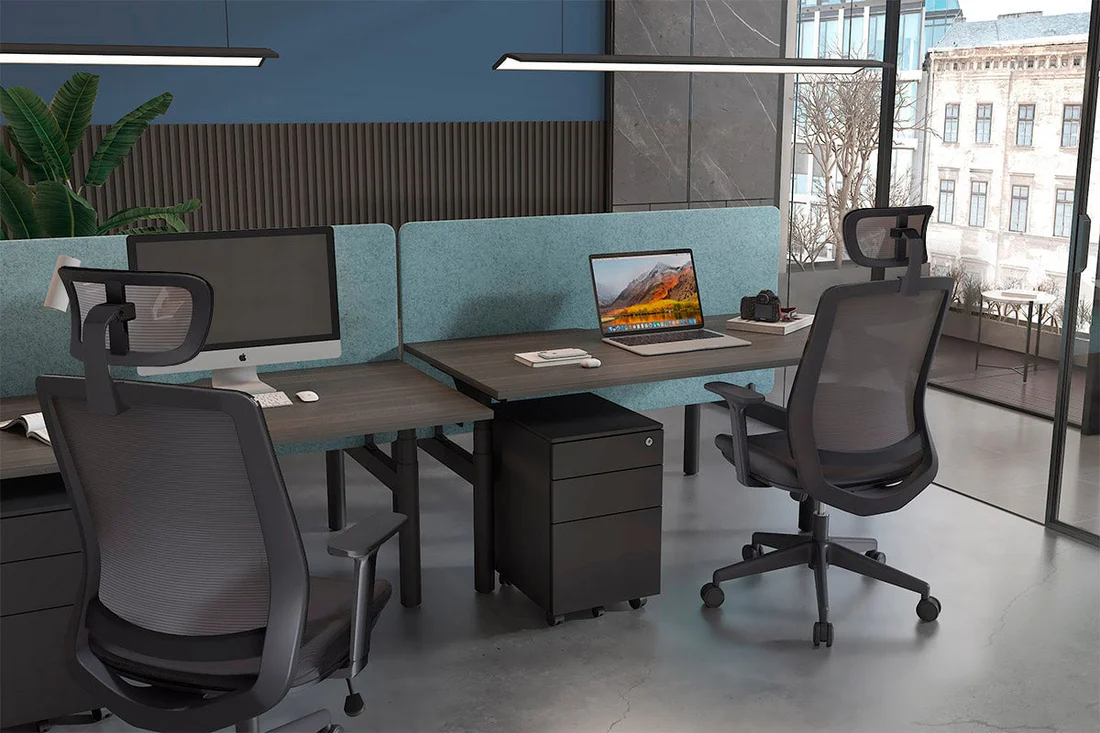Task Chairs Vs Ergonomic Chairs - A Comprehensive Breakdown


Selecting the right office furniture is essential for creating a productive and comfortable work environment. Office chairs play a crucial role in employee well-being and efficiency, making it important to understand the differences between task chairs and ergonomic chairs.
This comprehensive breakdown will help you make an informed decision for your business.
Task Chairs
Definition and Features
Task chairs are designed for general office use, providing basic support and functionality. These chairs are typically more affordable and feature a simple design. Common features include adjustable height, a swivel base, and casters for easy movement. Task chairs are suitable for short to moderate periods of sitting and are often found in standard office settings.
Benefits
Task chairs offer several advantages for businesses looking to furnish their offices on a budget. Their simplicity and affordability make them an attractive option for equipping large workspaces. Task chairs are lightweight and easy to move, allowing for flexible office layouts and quick reconfiguration of work areas. Additionally, task chairs are often available in various styles and colors, making it easy to match them with other office furniture.
Limitations
While task chairs provide basic support, they may not offer the level of comfort and adjustability required for prolonged periods of sitting. Employees who spend long hours at their desks may experience discomfort or strain, leading to decreased productivity and potential health issues. Task chairs typically lack advanced ergonomic features such as lumbar support, adjustable armrests, and seat depth adjustment.
Ergonomic Chairs
Definition and Features
Ergonomic chairs are specifically designed to support the body and promote healthy sitting posture. These chairs are equipped with multiple adjustable features to accommodate individual preferences and body types. Common features include adjustable lumbar support, seat height, armrests, and backrest tilt. Ergonomic chairs aim to reduce the risk of musculoskeletal disorders and enhance overall comfort.
Benefits
The primary advantage of ergonomic chairs is their ability to provide customized support for extended periods of sitting. The adjustable features allow users to tailor the chair to their specific needs, promoting proper alignment and reducing the risk of strain or injury. Ergonomic chairs are ideal for employees who spend long hours at their desks, as they can help maintain comfort and productivity throughout the workday.
In addition to enhancing comfort, ergonomic chairs can have a positive impact on employee health and well-being. By reducing the risk of musculoskeletal issues, these chairs can contribute to fewer sick days and improved overall morale. Investing in ergonomic chairs as part of your office furniture can demonstrate a commitment to employee health and well-being, potentially leading to higher job satisfaction and retention.
Limitations
The primary drawback of ergonomic chairs is their higher cost compared to task chairs. The advanced features and adjustable components make ergonomic chairs a more significant investment. Additionally, the multitude of adjustment options may require some training or guidance to ensure employees can make the most of the chair's features. Despite these considerations, the long-term benefits of ergonomic chairs often justify the initial expense.
Comparison of Task Chairs and Ergonomic Chairs
Comfort and Support
When it comes to comfort and support, ergonomic chairs have a clear advantage over task chairs. The customizable features of ergonomic chairs allow for personalized support, reducing the risk of discomfort and strain during long work hours. Task chairs, while suitable for short to moderate periods of sitting, may not provide the necessary support for prolonged use.
Adjustability
Adjustability is another key differentiator between task chairs and ergonomic chairs. Ergonomic chairs offer a wide range of adjustments, including lumbar support, seat height, armrests, and backrest tilt. This level of customization ensures that each user can find a comfortable and supportive seating position. Task chairs, on the other hand, typically offer limited adjustability, focusing on basic height and swivel adjustments.
Price and Value
In terms of price, task chairs are generally more affordable than ergonomic chairs. This makes task chairs an attractive option for businesses looking to furnish their offices on a budget. However, the long-term value of ergonomic chairs should not be overlooked. The potential health benefits and increased productivity associated with ergonomic chairs can offset the initial higher cost, making them a worthwhile investment for many businesses.
Aesthetics and Design
Both task chairs and ergonomic chairs are available in various styles and designs, allowing businesses to choose options that complement their office furniture and overall aesthetic. Task chairs often have a simpler, more streamlined design, while ergonomic chairs may feature a more robust and functional appearance. The choice between the two will depend on the specific needs and design preferences of the office.
Durability and Longevity
Ergonomic chairs are generally built to last longer than task chairs due to their higher-quality materials and construction. The durability of ergonomic chairs makes them a more sustainable option for businesses in the long run. Task chairs, while initially less expensive, may need to be replaced more frequently, potentially leading to higher costs over time.
Selecting the right office furniture, particularly chairs, is essential for creating a comfortable and productive work environment. Task chairs and ergonomic chairs each have their own set of advantages and limitations. By understanding the differences and considering the specific needs of your employees, you can make an informed decision that enhances both comfort and productivity in your office.
